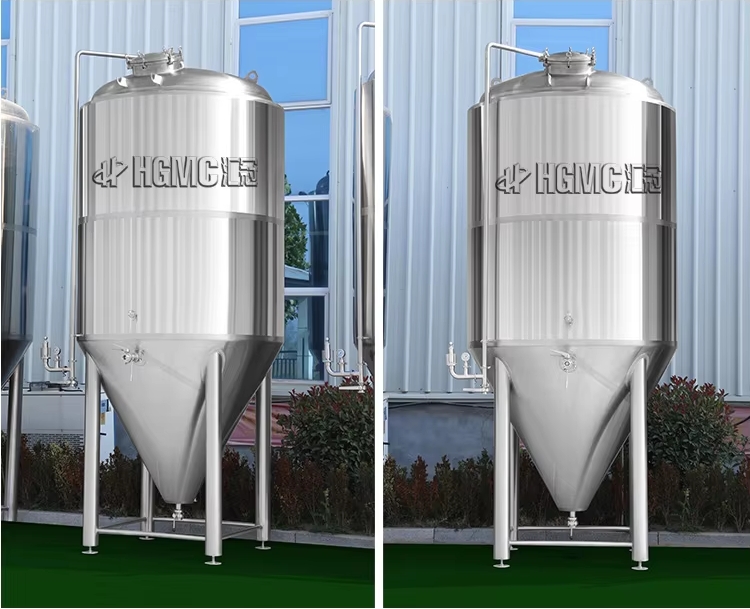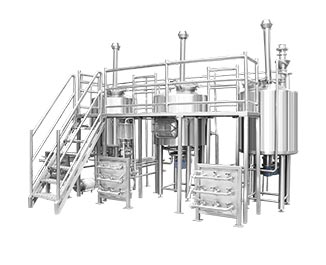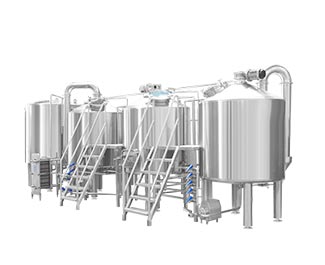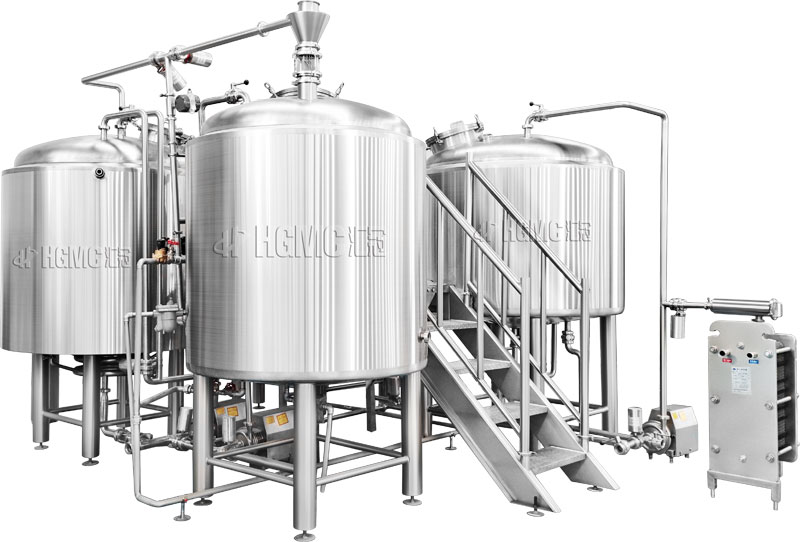A craft brewery system, also known as a microbrewery, typically refers to a small-scale brewery producing beer in smaller batches, often emphasizing quality ingredients and brewing techniques over mass production. These systems include essential equipment for mashing, lautering, boiling, fermentation, and cooling.
Key Components of a Craft Brewery System:
Mashing Vessel: Used to extract sugars from the malted grains.
Lautering Vessel: Separates the liquid wort (sweet water) from the spent grain.
Kettle/Whirlpool Tank: Where the wort is boiled and hops are added.
Fermentation Tanks: Where the wort is fermented by yeast to produce beer.
Cooling System: To rapidly cool the wort after boiling.
Conditioning System: To further refine the beer’s taste and clarity.
Filtration System: To remove any remaining particles and make the beer clear.
Packaging System: For bottling or kegging the finished beer.
Types of Craft Brewery Systems:
Microbrewery:
Smaller breweries, often independently owned, focusing on quality and flavor.
Brewpub:
A brewery that also operates a restaurant or bar, allowing customers to enjoy fresh beer on-site.
Nano Brewery:
A very small-scale brewery, often producing beer in batches of 1 to 3 barrels.
so Based on a comprehensive analysis of current industry standards and 2025 innovations, here’s a detailed overview of craft brewery system features, configurations, and selection criteria:
One. Key Features of Modern Craft Brewery Systems
1.Smart Automation & Control:
IoT-enabled systems with mobile app integration
PLC-based automation
2.Energy Efficiency:
Multi-layer thermal jacketing (SUS304 stainless steel) for optimized heating/cooling
Energy-recovery systems in advanced brewhouses
3.Hygiene & Maintenance:
Self-cleaning CIP (Clean-in-Place) systems with automated cycles
Mirror-finish polishing (Ra ≤0.4μm) to prevent bacterial adhesion
4.Material Quality:
Food-grade SUS304/316L stainless steel for all contact surfaces
100% TIG welding and pressure testing (up to 5 Bar) for leak-proof durability

Two. Common Configurations & Scalability
Small-Scale (Nano/Brewpub):
Electric 2-Vessel Systems: Combine mashing/boiling in one vessel and whirlpool/fermentation in another; ideal for ≤500L batches
All-in-One Systems: Integrated units like HGMC small brewery system (10L brewing + 5L serving) for home/small businesses
Mid-Scale (Craft Production):
3–4 Vessel Systems: Separate mash tuns, boil kettles, and fermenters for flexibility Supports 10+ batches/day
Modular Expansion: Add fermenters or grain-handling modules as needed
Large-Scale (Regional Distribution):
5-Vessel Automated Lines: Dedicated vessels for mashing, lautering, boiling, whirlpooling, and fermentation; ≥50 hL/batch capacity
Table: Configuration Comparison by Production Scale
Scale Batch Size Vessels Automation Level Cost Range
Nano/Home 10L–100L 1–2 Basic app control $500–$3,000 25
Brewpub 100L–1,000L 2–3 PLC-based $10,000–$50,000 28
Production 1,000L+ 4–5+ Advanced DCS $100,000–$500,000+ 810
Three. What to Look for in 2025: Critical Selection Criteria
Needs Assessment:
Space constraints
Beer diversity goals (e.g., systems handling 60–70 recipes/year like Mother Earth Brewing’s setup)
Automation Depth:
Tiered options: Basic (manual valves) → Advanced (touchscreen PLC with recipe libraries) → Custom (AI-driven optimization)
Compliance & Safety:
Certifications (CE, UL, ISO9001) and food-safety standards
Location regulations
Supplier Evaluation:
Post-sale support
Community reputation
Four. Emerging Trends for 2025
Sustainability: Water-reduction tech in CIP cycles and solar-compatible electric systems
Hyper-Flexibility: Single-tank multi-functionality
Data Integration: Cloud-based OEE (Overall Equipment Effectiveness) tracking for predictive maintenance
Five. Implementation Tips
Start with scalable systems to avoid costly upgrades (e.g., 2-vessel → 4-vessel progression)
Prioritize vendor agnosticism for future tech integrations
Allocate 15–20% of budget for ancillary costs (installation, training, permits)




